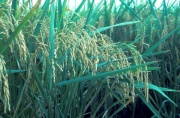Difference between revisions of "Rice husk"
Jump to navigation
Jump to search
m (Text replace - "\[http:\/\/cameo\.mfa\.org\/materials\/fullrecord\.asp\?name=([^\s]+)\s(.*)\]" to "$2") |
|||
| Line 8: | Line 8: | ||
[[media:download_file_240.pdf|Properties of Common Abrasives]] | [[media:download_file_240.pdf|Properties of Common Abrasives]] | ||
| − | + | == Resources and Citations == | |
| − | |||
| − | == | ||
* Robert Fournier, ''Illustrated Dictionary of Practical Pottery'', Chilton Book Company, Radnor, PA, 1992 | * Robert Fournier, ''Illustrated Dictionary of Practical Pottery'', Chilton Book Company, Radnor, PA, 1992 | ||
Latest revision as of 15:10, 15 October 2020
Description
The outer seed covering from rice grains, a cereal obtained from genus Oryza sativa. Rice husks are separated from the seed during milling. When burnt, the husks can yield an ash which is greater than 95% Silica. Rice husk ash has been used as a Filler, an Abrasive, and as a Refractory material.
Comparisons
Properties of Common Abrasives
Resources and Citations
- Robert Fournier, Illustrated Dictionary of Practical Pottery, Chilton Book Company, Radnor, PA, 1992
- Van Nostrand's Scientific Encyclopedia, Douglas M. Considine (ed.), Van Nostrand Reinhold, New York, 1976
- Random House, Webster's Encyclopedic Unabridged Dictionary of the English Language, Grammercy Book, New York, 1997
- The American Heritage Dictionary or Encarta, via Microsoft Bookshelf 98, Microsoft Corp., 1998
